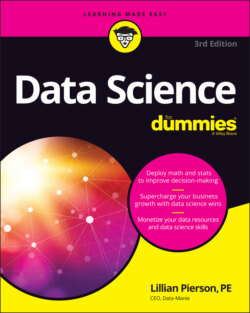Читать книгу Data Science For Dummies - Lillian Pierson - Страница 86
Identifying patterns in time series
ОглавлениеTime series exhibit specific patterns. Take a look at Figure 4-9 to gain a better understanding of what these patterns are all about. Constant time series remain at roughly the same level over time but are subject to some random error. In contrast, trended series show a stable linear movement up or down. Whether constant or trended, time series may also sometimes exhibit seasonality — predictable, cyclical fluctuations that reoccur seasonally throughout a year. As an example of seasonal time series, consider how many businesses show increased sales during the holiday season.
FIGURE 4-9: A comparison of patterns exhibited by time series.
If you’re including seasonality in your model, incorporate it in the quarterly, monthly, or even biannual period — wherever it’s appropriate. Time series may show nonstationary processes — unpredictable cyclical behavior that isn’t related to seasonality and that results from economic or industry-wide conditions instead. Because they’re not predictable, nonstationary processes can’t be forecasted. You must transform nonstationary data to stationary data before moving forward with an evaluation.
Take a look at the solid lines shown earlier, in Figure 4-9. These represent the mathematical models used to forecast points in the time series. The mathematical models shown represent good, precise forecasts because they’re a close fit to the actual data. The actual data contains some random error, thus making it impossible to forecast perfectly.
For help getting started with time series within the context of the R programming language, be sure to visit the companion website to this book (http://businessgrowth.ai/), where you’ll find a free training and coding demonstration of time series data visualization in R.
